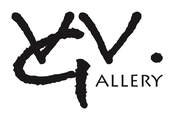Van Vliet Asemics
An Exploration : Art || Asemic || Words
Van Vliet Gallery
Van Vliet Gallery
|
“I have always thought of Karla’s work as other-worldly. These images invoke bodies and resistance to silence--to not be silenced. Asemic writing here is not the absence of meaning, but the beginning of experience through translation. The images paired with prose, a process and a journey, are bonded and yet hint at a frayed universe where silence is Queen and desire holds her in hand. The reflection of a collective trauma of the times and a personal one swing up and down, brandish and enlighten a space, and create a postponed feminine literacy emerging in a strange new world. A truly remarkable and necessary collection to add to a growing field of asemics and visual poetry.”
--Kristine Snodgrass, author of American Apparell “Subtly tinted and textured, Van Vliet’s markings seem much older than they are--fragments from a lost civilization, wiser than ours. Each page is worth a prolonged contemplation.” — Peter Schwenger, author of Asemic: The Art of Writing |
Karla Van Vliet’s new book, Fluency: A Collection of Asemic Writing, presents thirty-seven images accompanied by Van Vliet’s personal insights and remarks.
In her words: “There are times when I do not have words. Yet I have the need and desire to write. It is to asemic writing that I turn in these moments. To the gesture of writing. . . . In the branching tree limbs, in the waves, in my hand’s scratching across paper, we each read the feeling that rises in us.” Regarding her method, she writes: “I listen into this empty and full space and then I place my pen or brush to the page and let my hand move. This is the practice of communicating with what is within me. With asemic writing I do not need to know anything more than this. No word required. No sense of meaning required. Just the willingness and desire to be in the process of making marks.” To purchase a copy of Fluency click here. From Shanti Arts:
For Karla Van Vliet, her lifelong practices of art and poetry have been close companions on her journey. Her works in acrylic on canvas and ink on paper have been influenced by landscape, ancient texts, and the liminal knowing of dreams. Her poems, often raw, seeped in nature and deeply devotional, tell stories of loss and acceptance, devastation and faith, and the journey toward love. Yet there came a time when Van Vliet had the need and desire to write, but she had no words. As an artist, she turned to the gesture of writing, her hands with pen or brush scratching across paper, and she found resolution through that simple act. Then she discovered asemic writing: a developing art movement that depicts writing-like markings within artworks. For Van Vliet, she found a way to unite her commitments to art and poetry, each dissolving into the other and resurfacing as asemic writing. Asemic writing is a developing art movement that is showing up in galleries, books, journals, and videos. Many twentieth-century artists have incorporated asemic writing into their work without actually giving it the name, such as Joan Miró, Paul Klee, Wassily Kandinsky, Cy Twombly, and others. But artwork incorporating what we would recognize as simply illegible characters may be found much earlier. During the Tang Dynasty (circa 800 CE), two Chinese calligraphers, Zhang Xu and Huaisu, became famous for creating wild illegible calligraphy, a practice that also became popular in Japan. The current growing popularity of asemic writing has been thought to be related to the multi-cultural aspect of today’s society, where exposure to different languages have familiarized us with seeing and hearing words we cannot understand. But there is also a perennial question that artists always strive to answer in their work: Why do we need words? |
